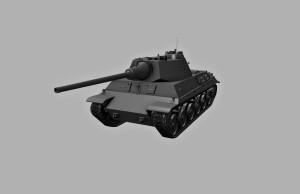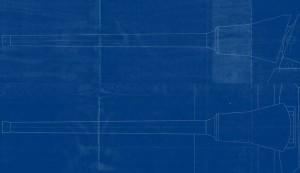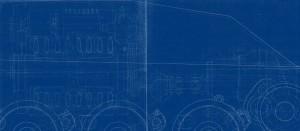Czechoslovak Skoda T 40
Source – http://yuripasholok.livejournal.com/4792812.html
The history of Czechoslovak production of tanks is extremely interesting, but still little studied. This period includes the first 10 years after the war, when the Czechoslovak industry boasted the accumulated experience of the German occupation. This allowed the creation of their armored vehicles. For a number of reasons, including economic and political reasons, most of these works of great interest not only have not been produced in series, but never reached the prototype stage. However, they represent a monument of engineering . It is worth noting that these projects and machines are quite modern.
La storia dell’industria bellica cecoslovacca per la produzione di carri armati ha un periodo estremamente interessante, ma ancora poco studiato. Questo periodo comprende i primi 10 anni del dopoguerra, quando l’industria cecoslovacca vantava l’accumulata esperienza dell’occupazione tedesca. Questo permise la creazione dei propri veicoli corazzati. Per una serie di motivi, tra cui la natura economica e politica, la maggior parte di queste opere di grande interesse, non solo non sono state prodotte in serie, ma neanche hanno raggiunto la fase di prototipo, tuttavia, essi rappresentano un monumento di ingegneria. Vale la pena notare che si tratta di progetti e macchine abbastanza moderni.
At the moment, the only source of information about the Czech military industry is a Czechoslovak military named Dubaneka Martin. His book is dedicated to the Czechoslovak military production in the years 1945-1955. Unfortunately, the book has a lot of errors, including those related to the history ofCzechoslovak tanks. Thanks to the work of Yuri Tintery (Jiří Tintěra), a Czech historian, some of these errors have been identified and the truth is found.
Al momento, l’unica fonte di informazioni sull’industria militare cecoslovacca è un tale Martin Dubaneka. Il suo libro è dedicato alla produzione militare cecoslovacca negli anni 1945-1955. Purtroppo, il libro ha un sacco di errori, tra cui quelli relativi alla storia dei carri armati cecoslovacci. Grazie al lavoro di Yuri Tintery (Jiří Tintěra), uno dei principali storici cechi, alcuni di questi errori sono stati individuati e la verità è stata trovata.
One of these errors is extremely significant and is related to the family of TVP tanks (všeobecného Použití Tank, main battle tank). The work on this project began in October 1945 until 1952. Unfortunately, as a result, instead of a series of TVP the Czech military industry built the T-34-85 and then the T-54. However, the Czech development was a success but for a number of reasons it was not possible to start the production. In the family line of TVP tanks Martin Dubanek included machines that were in competition. The TVP project was developed by the VTU (Vojenský Technický Ústav), while the vehicle, which has been given the acronym of T-40, was developed by Škoda.
Uno di questi errori è estremamente significativo ed è legato alla famiglia dei carri TVP (Tank všeobecného Použití, carro da battaglia principale). Il lavoro su questo progetto è iniziato nell’ottobre del 1945 ed è durato fino al 1952. Purtroppo come risultato invece di una serie di TVP si ebbe prima il T-34-85 e quindi il T-54, tuttavia, lo sviluppo ceco ebbe successo ma per una serie di motivi non fu possibile avviare la produzione. Nella linea di famiglia dei carri TVP Martin Dubanek comprendeva però macchine che in realtà erano in competizione. Il progetto TVP è stato sviluppato dalla VTU (Vojenský Technický Ústav), mentre il mezzo, a cui è stata attribuita la sigla di T-40, è stato sviluppato da Škoda.
The technical requirements of the Skoda T-40 project repeated those presented for TVP. The armor was 65 mm, a 88 mm gun as main armament, a crew of 5 people, top speed of 50 km / h. Outwardly, the two projects were very similar, but in fact a number of details differed. At that time, the project VTU was a conceptual sketch, Škoda offered a more mature project with more specific unit and structure.
I requisiti tecnici del progetto Škoda T-40 ripetevano quelli presentati per il TVP. La corazzatura era di 65 mm, un cannone da 88 mm come armamento principale, u nequipaggio composto da 5 persone, velocità di punta di circa 50 km / h. Esteriormente, i due progetti erano molto simili, ma in realtà una serie di dettagli differivano. A quel tempo, il progetto VTU era uno schizzo concettuale, Škoda offriva un progetto più maturo con più specifiche sull’unità e la struttura.
Structurally, TVP and T-40 were similar, especially the characteristic shape of the front part of the hull. Also the hull was similar. But the similarity stops there. Škoda engineers refused to match the installation of machine guns and flamethrowers. Suspensions also differed, with spring for the TVP, torsion bars for the T-40. In general the development of the project Škoda seemed quite adequate.
Strutturalmente, TVP e T-40 erano simili, soprattutto per quanto riguarda la forma caratteristica della parte frontale dello scafo. Anche il telaio era simile. Ma la somiglianza finisce qui. Gli ingegneri Škoda si rifiutarono di abbinare l’installazione di mitragliatrice e lanciafiamme. Anche le sospensioni differivano, a molla per il TVP, a barre di torsione per il T-40. In generale lo sviluppo del progetto Škoda sembrava abbastanza adeguato.
Especially in terms of specificity of the propulsion TVP does not declared specifications, except the push that was to be about 20 hp per tonne. Škoda engineers instead offered a relatively turnkey solution – an air-cooled diesel Škoda 16ADH140 700 hp at 2000 rev / min. The development of TVP VTU project had a mass of 33 tons, the T-40 had a weight of 40 tons when fully loaded.
Soprattutto in termini di specificità motopropulsore il TVP non dichiarava specifuche, tranne la spinta che doveva essere di circa 20 hp per tonnellata. Gli ingegneri Škoda invece offrirono una soluzione relativamente chiavi in mano – un diesel raffreddato ad aria Škoda 16ADH140 700 CV a 2000 giri / min. Mentre come progetto di sviluppo TVP VTU aveva una massa di circa 33 tonnellate, il T-40 doveva avere un peso di 40 tonnellate a pieno carico.
There were big differences in the design of the turret. The design of the VTU turret had complex shapes with curved sides. It was a turret on which a Schmalturm 8.8. cm KwK L / 71 was to be installed. In February of 1946 it is planned to be installed in the turret TVP VTU a 8.8 cm kplvz.41 gun. Otherwise the Škoda engineers had designed a turret reminiscent of the Tiger II turret. A 8.8cm should be installed in the Skoda turret. This was a 8.8 cm KwK 36 L / 56 without muzzle brake.
Grandi differenze vi erano nel disegno della torretta. Il progetto della torretta VTU aveva forme complesse con lati curvi. Si trattava di una torretta Schmalturm sulla quale un 8.8. cm KwK L / 71 doveva essere installato . Nel febbraio del 1946 si prevedeva di installare dentro la torretta TVP VTU un cannone 8,8 cm kplvz.41. Per quanto riguarda la Škoda, i suoi ingegneri avevano disegnato una torre che ricordava la torretta del Tiger II. Un 88mm di 57 calibri doveva essere installato dentro la torretta Skoda. Si trattava di un 8.8 centimetri KwK 36 L / 56 senza freno di bocca.
In general, the engineers of Škoda had developed an absolutely modern design, which had only one drawback – an inadequate armor for that period. Unfortunately, the project did not come to the stage of prototype and production. Already in 1946 they demanded changes to the project that led to the Skoda T 40 cancellation.
In generale, gli ingegneri di Škoda avevano sviluppato un design assolutamente moderno, che aveva solo un inconveniente – una corazzatura per quel periodo insufficiente. Purtroppo il progetto non arrivò alla fase di prototipo e di produzione . Già nel 1946 si chiesero modifiche al progetto che portarono lo Skoda T 40 alla cancellazione.





